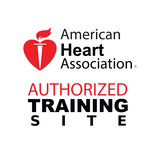Upper Compression Rate Limit Defined - The new guidelines specify that compressions should be administered at a rate of 100 to 120 compressions per minute. This is an update from the 2010 recommendation of "at least 100 compressions per minute."
Upper Compression Depth Limit Defined - The new guidlines specify that compression depth on an adult should be at least 2-inches, but no more than 2.4-inches. This is an update from the 2010 recommendation of "at least 2-inches."
Delaying Ventilations - Of all the new 2015 guidelines, we see this as one of the most promising when it comes to increasing survival rates. For witnessed out-of-hospital cardiac arrest with a shockable rhythm, EMS systems that are priority-based and multitiered, may consider a strategy of up to 3 cycles of 200 continuous compressions followed by a shock (if advised) with passive oxygenation (non-rebreather) and airway adjuncts (no positive pressure ventilation). This strategy places emphasis on providing continuous cardio-cerebral perfusion without interrupting compressions for ventilations for the first 6 to 8 minutes of a code.
Simplified Advanced Airway Ventilation Rate - The new guidlines simplify the ventilation rate for victims of cardiac arrest of all ages with an advanced airway in place. Rescuers should ventilate at a rate of one breath, every 6 seconds, while continuous chest compressions are given. This is an update of the 2010 recommendation of "one breath, every 6 to 8 seconds."
Removal of Vasopressin - Vasopressin has been removed from the Adult Cardiac Arrest Algorithm since, "the combined use of vasopressin and epinephrine offers no advantage to using standard-dose epinephrine in cardiac arrest."
When to "call it": Low CO2 - The new guidlines add persistent low end-tidal CO2 levels as another indication that resuscitative efforts may be futile. CO2 levels below 10mm/hg in intubated patients, in the presence of high-quality chest compressions, persisting for more than 20-minutes has been associated with a low likelihood of resuscitation.
Widened Therapeutic Hypothermia Range - The new guidlines recommend expanding the Targeted Temperature Management range for all comatose adult patients with ROSC to 32℃ - 36℃. This is an update from the 2010 guideline of "32℃ to 34℃."
Removal of Out-of-Hospital Cooling - The routine prehospital cooling of patients with rapid infusion of cold IV fluids afer ROSC has demonstrated no benefit, and is not recommended.





